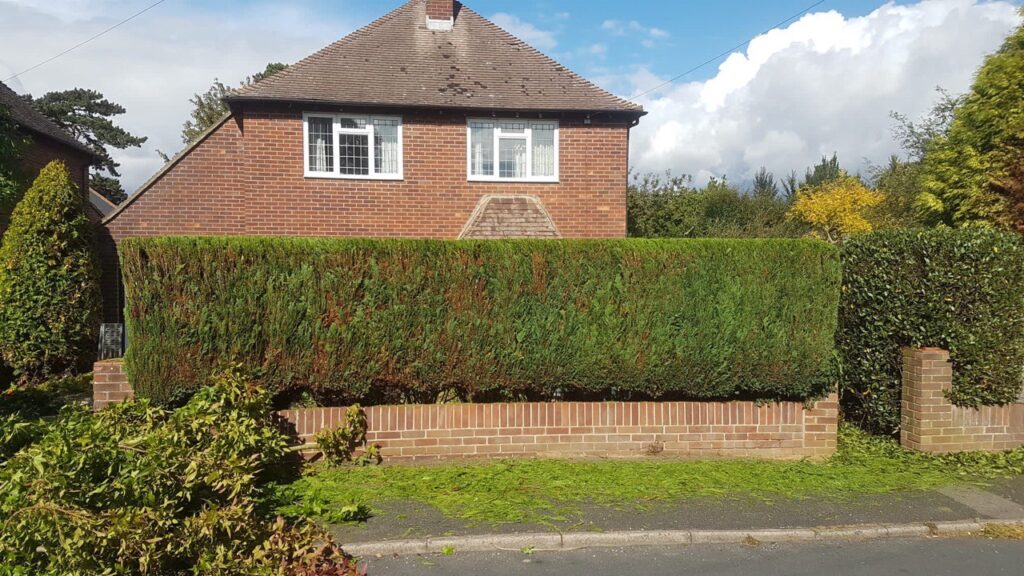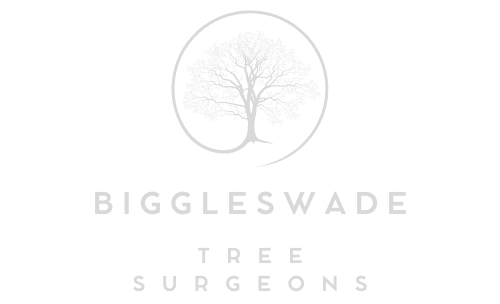When a Tree Is Too Damaged to Save: Know the Signs
Introduction
Trees are often among the most treasured features of a garden or landscape. They provide beauty, shade, habitat for wildlife, and even increase property value. But like any living thing, trees are vulnerable to disease, storm damage, old age, and decay. When a tree becomes too damaged, keeping it in place can do more harm than good — to both safety and surrounding vegetation.
At Biggleswade Tree Surgeons, we work with property owners across Biggleswade and Bedfordshire to help assess when a tree is beyond saving and needs to be removed. Knowing the signs early can prevent costly consequences and avoid dangerous situations. Below, we explore the key indicators that a tree may be too far gone.
Significant Structural Damage
One of the clearest signs that a tree can’t be saved is when it suffers major structural damage. This may result from strong winds, lightning, or years of unchecked decay. If the trunk is split or a major limb has detached, the tree’s integrity is seriously compromised.
What to look for:
- Deep vertical cracks or splits in the main trunk
- Large limbs that have broken away from the canopy
- A visible lean or unbalanced shape after a storm
- Bark falling off in large patches
Once a tree loses its structural balance, it becomes a hazard. Even minor movement in the wind could trigger a fall.
Extensive Root Damage
Tree roots are like an anchor — if they’re damaged or dying, the tree’s stability and nutrient intake are compromised. Unfortunately, root damage often goes unnoticed until it’s too late, as most of it happens underground.
Signs of root trouble:
- Fungal growth such as mushrooms at the base
- Cracked or lifted soil near the trunk
- A sudden lean without obvious wind damage
- Dieback in the upper canopy
Root issues are particularly common in urban areas where driveways, footpaths, or nearby construction can compact soil and cut through root systems.
Severe Disease or Decay
Not all tree diseases are fatal, but some types of fungal infections or pest infestations can be so advanced that recovery is impossible. These conditions often spread quickly through weakened trees and can also put nearby healthy trees at risk.
Common warning signs:
- Cavities or hollows in the trunk
- Large areas of rot or soft wood
- Oozing sap or strange smells
- Discoloured or spotted leaves far out of season
At Biggleswade Tree Surgeons, we regularly inspect trees for signs of decay that may not be visible from the ground. Early intervention can sometimes help, but not always.
Major Canopy Dieback
A healthy tree should have a full, consistent canopy. If large sections of it are barren, brittle, or producing very little leaf growth, the tree is likely in decline. While some seasonal thinning is normal, widespread dieback is a red flag.
Symptoms to watch for:
- Sparse leaf coverage or smaller-than-usual leaves
- Dead or brittle branches that snap easily
- Entire limbs lacking buds in spring
A thinning canopy suggests that the tree is no longer supporting itself efficiently through photosynthesis, often a terminal sign of decline.
Risk to Surroundings
Even if a tree looks somewhat stable, its location might make it too dangerous to keep. Trees near buildings, busy roads, footpaths, or play areas must be assessed more stringently. The risk of falling limbs or a full collapse increases with age, poor condition, or unpredictable weather.
Consider removal if:
- The tree is leaning toward a structure or boundary
- Falling debris has caused damage before
- Nearby utility lines are at risk
- High winds are common in the area
If public or property safety is at stake, removal is usually the responsible option.
What Comes Next
If you’ve spotted one or more of these signs, it’s best to act quickly. Professional tree surgeons can carry out a detailed inspection to confirm whether the tree is recoverable. If not, safe and controlled removal is the next step. At Biggleswade Tree Surgeons, we’re equipped to manage the process efficiently and with minimal disruption to your landscape.
We also offer advice on replanting and choosing suitable replacement species to restore balance and aesthetics to your garden.
Conclusion
Trees play a vital role in our gardens and communities — but when one is damaged beyond repair, it’s important to recognise the signs and act responsibly. From root failure to structural collapse and advanced disease, the warning signals can often be subtle at first but escalate quickly.
If you’re concerned about the condition of a tree on your property in Biggleswade or the wider Bedfordshire area, don’t leave it to chance. Biggleswade Tree Surgeons can help assess, advise, and take appropriate action to ensure the safety and beauty of your outdoor space is maintained. Sometimes, the best care you can give a tree is knowing when to let it go.
Call us on: 01767 660 596
Click here to find out more about Biggleswade Tree Surgeons
Click here to complete our contact form and see how we can help with your tree needs.

